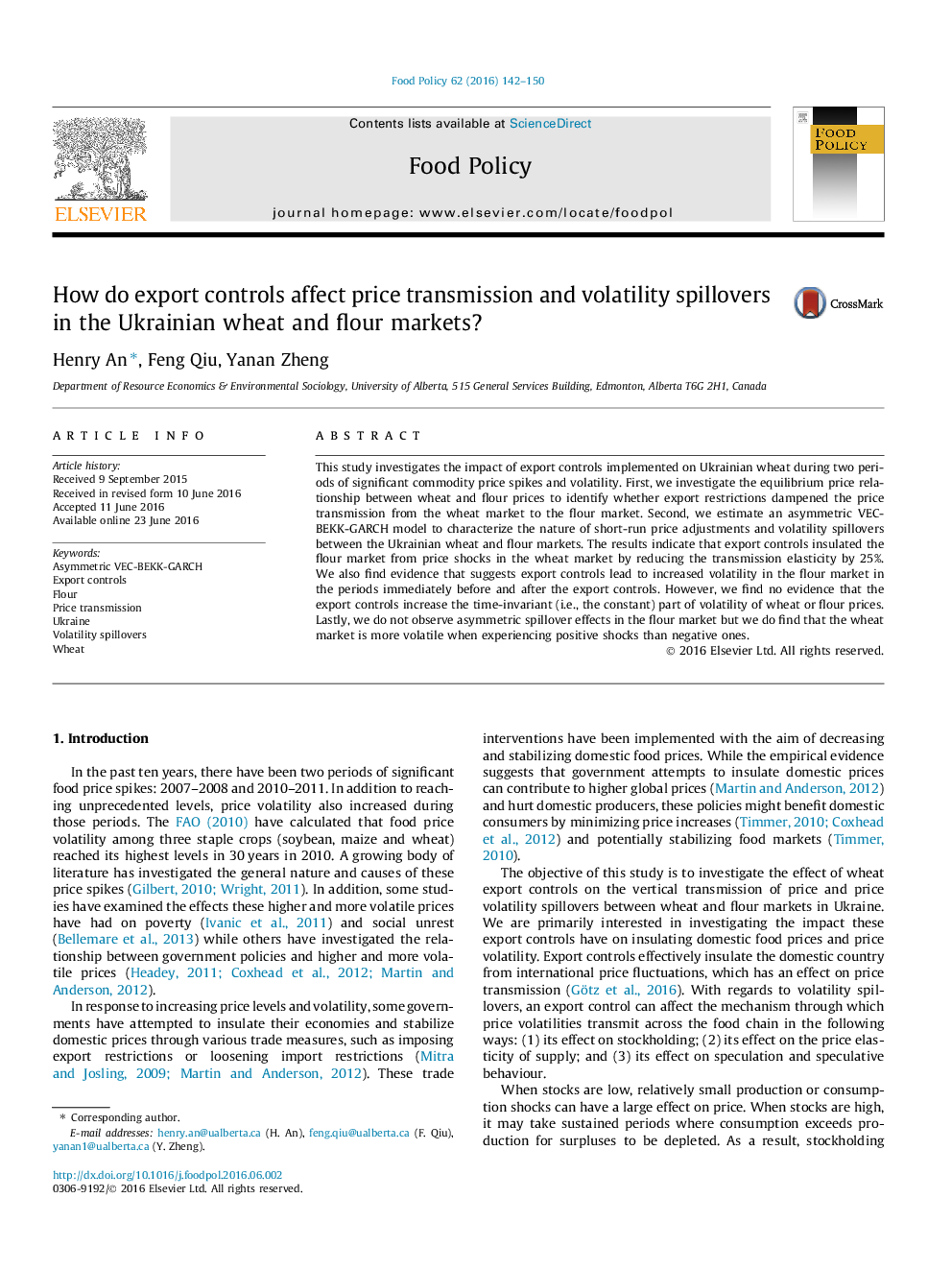| Article ID | Journal | Published Year | Pages | File Type |
|---|---|---|---|---|
| 5070142 | Food Policy | 2016 | 9 Pages |
â¢We examine the impact of export controls on price transmission and volatility spillover.â¢We use a two-step Engle-Granger approach and estimate a VEC-BEKK-GARCH model.â¢We find export restrictions decrease price transmission by 25%.â¢We also find price volatility increases in the periods just before and after export controls.â¢Government restrictions can insulate domestic prices but leads to greater price volatility.
This study investigates the impact of export controls implemented on Ukrainian wheat during two periods of significant commodity price spikes and volatility. First, we investigate the equilibrium price relationship between wheat and flour prices to identify whether export restrictions dampened the price transmission from the wheat market to the flour market. Second, we estimate an asymmetric VEC-BEKK-GARCH model to characterize the nature of short-run price adjustments and volatility spillovers between the Ukrainian wheat and flour markets. The results indicate that export controls insulated the flour market from price shocks in the wheat market by reducing the transmission elasticity by 25%. We also find evidence that suggests export controls lead to increased volatility in the flour market in the periods immediately before and after the export controls. However, we find no evidence that the export controls increase the time-invariant (i.e., the constant) part of volatility of wheat or flour prices. Lastly, we do not observe asymmetric spillover effects in the flour market but we do find that the wheat market is more volatile when experiencing positive shocks than negative ones.
